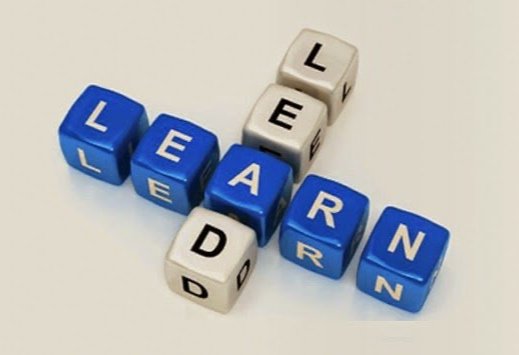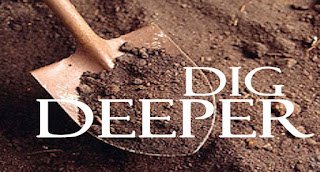Originally published on February 20, 2024.
I have written about resilience and related topics of trauma and post-traumatic growth before. And I'm back for another crack at the topic due to significantly trying circumstances. In the notes that follow, I will talk about lessons in resilience that have been reinforced for me over the past year and more. It's not my intent to give you a blow-by-blow account of the challenges I have been facing. In reality, the specifics don't matter as much as how I have been working to place adversity - and even trauma - in perspective, and use some tools I already had at my disposal to move forward. What I will disclose is that in January, I lost my mother and the last of my parents to a stroke/complications of the stroke. Mercifully, her journey in ill health lasted a very short time and was preceded by decades of good health. She lived a good life. Within the context of my own life, her passing has not been, however, the most significant negative reality I have been having to manage in the past year.
The events of the past many months have caused me to question a whole series of foundational elements that I had taken for granted in my life. I suspect - and can probably say that I even know - that all of you have been in similar places at least once, if not more often, in your own lives. All too often in these circumstances, our approach to these adverse events is to spin, overthink, isolate and catastrophize. As humans, we are driven to respond to perceived threats, seek to contain or mitigate against these threats, go into some form of fight or flight mode (and perhaps both at different points in time) and try to get back to a preferred path forward of our own choosing. The challenge is the preferred path is the one we were on and now is no longer feasible to maintain. Too much has changed. Too much was and is beyond our control. And perhaps the path we were on was never as concrete as we thought it was.
Given all of that, what have I learned, or rather, what have I relearned that has helped me persevere through my own personal challenges? What has provided me a sense of direction and hope for a new - if different - future? Listed below are some of the lessons and tools I believe I have rediscovered and have been using to move forward.
Accept Reality. For far too long in the past year, I worked to recapture or reinvigorate a life I thought I had. Call this resistance to change. Call it denying reality. Resistance or denial didn't serve me well at all. It wasn't helping me see things for what they were. It wasn't helping me recover, learn, grow, or feel better. Paradoxically, the more I tried to invest in a reality or state that wasn't going to be possible, the more these efforts actually prolonged my pain and difficulties. There is real truth to the adage that what we resist persists.
The path forward for me then - which took several months to arrive at - came from accepting the environment in which I was actually living. To be clear, acceptance does not equate to resignation or giving up. But it does suggest that the tactics I was using to manage through my reality were often not the right tools for the job in front of me. Once I was able to change - and accept - what I was seeing, I was able to move forward more productively. Again, this change in perspective hasn't meant that the path since then has been easy, without pain, or not been characterized by grieving. All of this is operative, but at least I have a better chance at doing more of the right things at the right time in the right way than I did before.
Accept What You Control - And Don't Control. Working with my Core Strengths© assessment results, I noted key strengths as a person/leader as being Supportive, Loyal, and Persevering. These strengths are operative when things are going well in my world. When I am challenged or when things are not going so well, I unfortunately double down on those very same strengths and become Self-Sacrificing, Gullible, and Stubborn (or masochistically persevering). That latter set of skills did not serve me well as I tried to navigate my trials and tribulations. Working back to the challenge of Accepting Reality, I kept trying to double down on solutions that were no longer appropriate to circumstances. By remaining so committed to a "cause", I merely heightened and extended my pain.
The realization for me eventually was I had to stop trying so hard to maintain a past state of (artificial?) equilibrium. As I would seek to work with my coaching clients, I also had to follow some of my own coaching process and questioning. Metaphorically speaking, I had to accept that I couldn't control the weather. All I could do was wear the proper clothing to manage in and through things I couldn't control.
Establish and Rediscover Your Network. In trying times, too many of us get too much inside our own heads and don't work with or create a network of people - friends, confidantes, coaches, even therapists - that can help us process the issues before us. As I have said before, when working with others, our mind is a dangerous neighborhood to go into alone. A natural threat response is to hunker down and go into our caves as it were. Aside from this typical deep-seated threat response, at various points we may find ourselves confused by what is happening around and to us. Therefore, it may be difficult to even determine how or what to respond to and how to communicate this with others.
However, as in a typical coaching engagement, the out loud processing of our reality is a critical step forward in understanding what we are actually dealing with. As we engage in this processing conversation, we have an ability to better understand what is real, what is imagined, and what the next logical steps forward might be for us. What we might also come to appreciate is that we were never really as alone as we thought.
I honestly can't emphasize this need for developing or reengaging with a supportive network strongly enough. The ability to process my thoughts with others, getting help to "right size" my reality, evaluate next steps, and just have one or more people present with me through pain has provided me with immeasurable benefits. I recently told two of my friends that their willingness to walk with me in this journey is a debt that I don't believe I'll ever be able to repay.
Focus on Your Health. I've been all over the map on this one in the past many months. At times, I have been able to get into a routine of physical exercise while at other times, most notably at the time of my mother's stroke and through to her passing, that ability to maintain a schedule has fallen by the wayside. Where I have been able to focus on myself, the ability to maintain a fitness routine has had direct benefit to sleep patterns along with supporting mental and emotional benefit.
The network noted above is also key here as well. In this case, you might be able to get support from others to maintain physical, mental, and emotional interactions so necessary to your sense of balance in a topsy turvy world. Even the simple act of a walk in the woods, while socializing with another compassionate human being, can reap benefits from being in the fresh air, exercising, and finding normal in a time of chaos.
Beyond what I have already mentioned, I have been trying to re-engage in hobbies, support diversion and focus through meaningful work, and even resurrecting the act of writing this blog. All of those approaches are helpful. Others that have been suggested to me are meditation and journalling - things I have yet to try but I know work for others.
Bottom line, there is no more important time to strengthen yourself, remind yourself of your positive qualities, and engage in positive activity than in a time of adversity. The alternative is a slow cycle downward where less energy and enthusiasm begets even less energy and enthusiasm.
Vision of a New Future. As hard as it often is, I also believe that what has helped me through adversity in the past and builds my resilience is crafting and imagining a new, positive future. Even if I start with the death of my mother - and how having the dubious distinction of being the oldest in my immediate family - it is clear that what was can no longer be. There will be no more daily calls between us. There will be no more care packages of handcrafted baking and foodstuffs lovingly made. There will be a new future ahead and I have a choice to create something that best suits the new facts as they are.
This future will be built one step at a time. It won't be easy or clear on some days. It can be helped and nurtured along but not rushed into existence overnight. I suggest being patiently impatient in this regard. Hope is not a strategy, but it is critical to helping us move forward beyond current circumstances. There will be forces trying to hold us back. Some of these forces will be external naysayers. Other forces will be the voices in your own head. But create a vision, foster hope, dare to dream even if your dreams start small from those tiny seeds will a new glorious future sprout.
Resilience is a critical part of being a successful leader and a well-adjusted human-being. Reflect on past adversity. Draw lessons and strength from your past. Rely on your team. The storm will pass. See you on the other side.
———————————————————————————————————
Greg Hadubiak, MHSA, FACHE, CEC, PCC
President & Founder - BreakPoint Solutions
gregh@breakpoint.solutions
www.breakpoint.solutions
780-250-2543















































